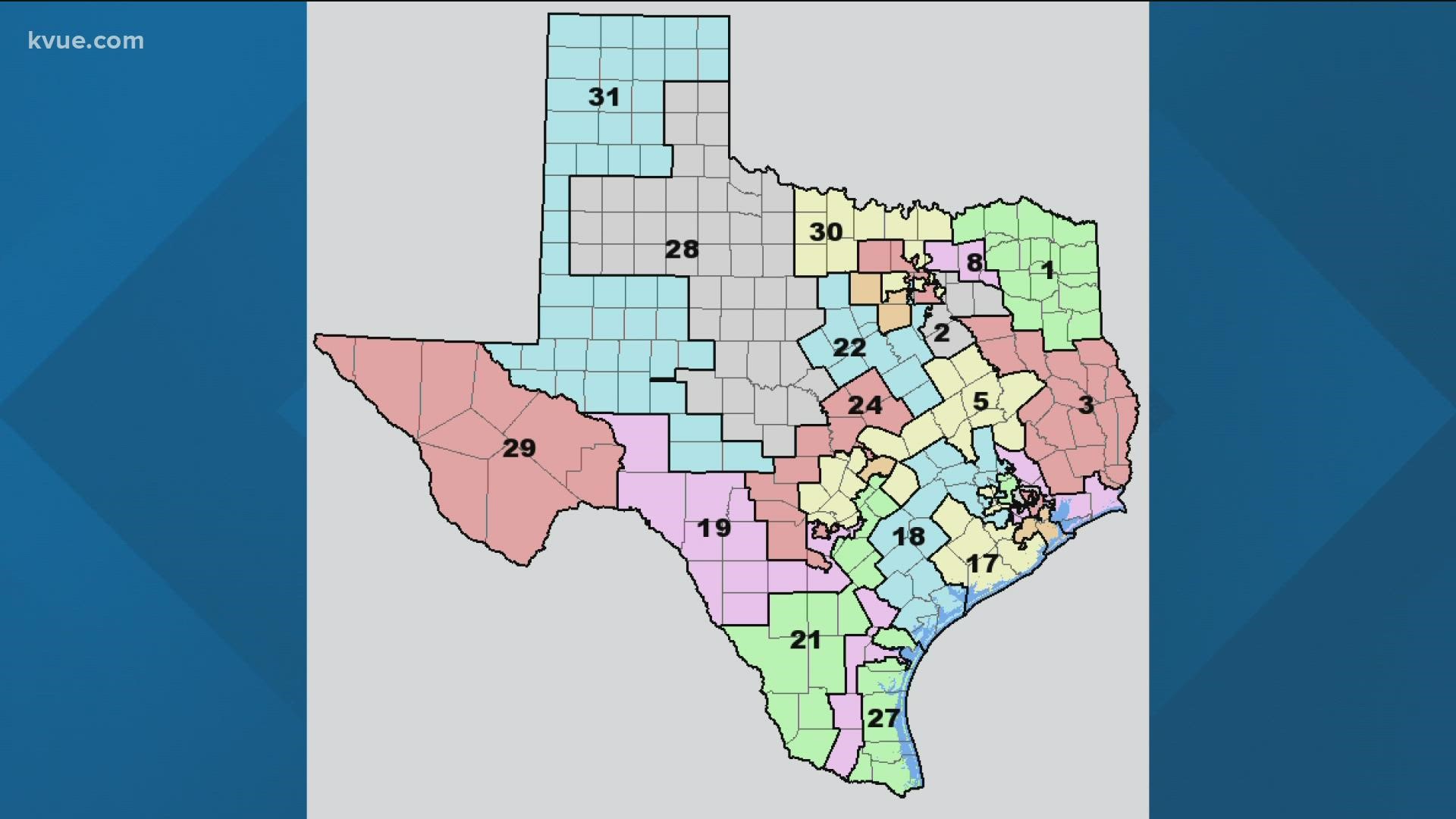AUSTIN, Texas — Texas lawmakers released a proposal for what the state’s U.S. congressional districts could look like for the next 10 years.
The map, released Monday, is the first draft of Texas’ new congressional map. In this proposed version, Austin gets one new district, but one previous district no longer contains any parts of Austin or its surrounding areas.
The map was proposed by Sen. Joan Huffman, a Republican who represents Houston and is leading the Senate's redistricting committee.
Texas gained two new congressional seats based on 2020 census data. For the next 10 years, the state will have 38 seats, meaning 38 districts.
One of the new districts, District 37, includes parts of Travis County and Williamson County. In the draft of the new map, Travis, Williamson and Hays counties help make up districts 10, 17, 21, 31, 35 and 37.


Travis and Hays counties used to be a part of District 25. Congressman Roger Williams is the 25th district’s current representative.
Texas currently has 36 seats. Each U.S. congressional district elects one representative to the U.S. House of Representatives.
According to The Texas Tribune, 25 districts, compared to 22 in the previous map, voted for former President Donald Trump in the 2020 election. Thirteen of the new districts voted for President Joe Biden.
This map is a part of the state's larger redistricting efforts.
In a statement on Monday, U.S. Rep. Lloyd Doggett (D-Texas) called the map "extreme gerrymandering," saying it would "dilute strong voices."
"With lines shaped like snakes, tentacles and dragons, parts of both Travis and Bexar are included in five different districts," said Doggett. "San Antonio and Austin are connected by a sliver only slightly wider than I-35. Since this is only the initial Senate draft, which can be altered in both the Senate and House, what's clearly demanded is more unity, more democracy, and less division and dilution. Any personal decision based on this draft is premature. The focus now should not be on the particular district from which any individual would seek election but on demanding less crooked lines for the entire State."
The Texas NAACP called the proposed map "another example of an anti-Black movement led by the state leadership."
"The proposed map vastly diminishes the voting strength of minorities all around the state by either packing them into districts already electing minority candidates of choice or cracking them by pushing them into districts dominated by conservative white voters," said Gary L. Bledsoe, Esq., state president of the Texas NAACP. "As the State has garnered two new Congressional seats on the backs of its minority population, it has sought to put forth a proposed Congressional map that is clearly retrogressive."
The Texas AFL-CIO also announced its opposition to the map.
“This map is illegitimate, placing incumbency protection and seizure of power ahead of communities of interest and the changing demographics of our state,” said Texas AFL-CIO President Rick Levy. “While 19 of 20 Texans added in the last decade were persons of color, this map appears to draw one less Hispanic majority district and no district with an African American majority. It continues an unfortunate history of Texas drawing maps to seize power rather than represent all Texans. While there is speculation about who is going to run for which office, our focus for now will be on fighting to make sure this map never becomes law.”
The Texas Legislature’s third special session started on Sept. 20. Gov. Greg Abbott announced redistricting would be on the agenda earlier this month.
The new maps will be used to elect members of the Texas House, Texas Senate, State Board of Education and U.S. House of Representatives. The new districts are based on 2020 U.S. Census data.
Both the Texas House and Senate need to pass the final version of the map. Only then will Abbott be able to sign it into law.
PEOPLE ARE ALSO READING:

